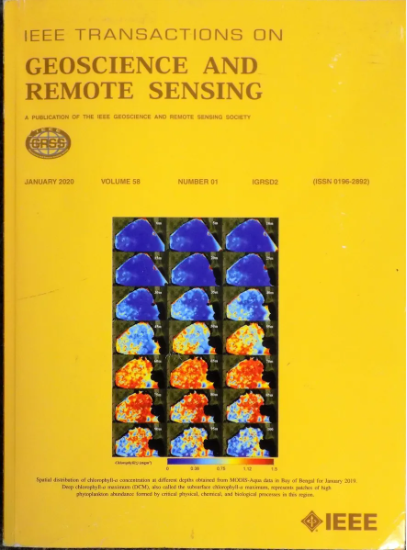Recursive 3-D Phase Unwrapping for Reliable Deformation Anomaly Detection in Multitemporal SAR Interferometry
IF 7.5
1区 地球科学
Q1 ENGINEERING, ELECTRICAL & ELECTRONIC
IEEE Transactions on Geoscience and Remote Sensing
Pub Date : 2025-03-18
DOI:10.1109/TGRS.2025.3552491
引用次数: 0
Abstract
Current synthetic aperture radar (SAR) missions with short repeat times bring the opportunity to get large-scale deformations in near real-time. Since nonstationary deformation is more likely to be a risk, postclassification is widely used to identify the temporal deformation patterns within extensive interferometric SAR (InSAR) data. However, conventional 3-D phase unwrapping (PU) with the assumption of stationary deformation behavior has a high probability of unwrapping error over a long time series, leading to more false detected anomalies. Here, we proposed a recursive 3-D PU method to unwrap the 3-D data stack recursively and detect the deformation anomalies concerning the nonstationary deformation. This method involves recursive temporal PU with a temporal smoothness constraint, followed by iterative spatial PU. Then, the multiple hypothesis test (MHT) is used to determine the optimal deformation model. Scatterers with deformation anomalies are identified using a generalized ratio test and assessed by their detectability power based on the predicted phase residuals. The main advantage of the proposed algorithm is the capability of dynamic data processing and decreasing the false alarm in detected deformation anomalies. The experimental results by both the simulated and real data demonstrate that the proposed method achieves reliable 3-D PU concerning nonstationary deformation, which would be beneficial for near real-time evaluation of deformation risks.求助全文
约1分钟内获得全文
求助全文
来源期刊

IEEE Transactions on Geoscience and Remote Sensing
工程技术-地球化学与地球物理
CiteScore
11.50
自引率
28.00%
发文量
1912
审稿时长
4.0 months
期刊介绍:
IEEE Transactions on Geoscience and Remote Sensing (TGRS) is a monthly publication that focuses on the theory, concepts, and techniques of science and engineering as applied to sensing the land, oceans, atmosphere, and space; and the processing, interpretation, and dissemination of this information.
 求助内容:
求助内容: 应助结果提醒方式:
应助结果提醒方式:


